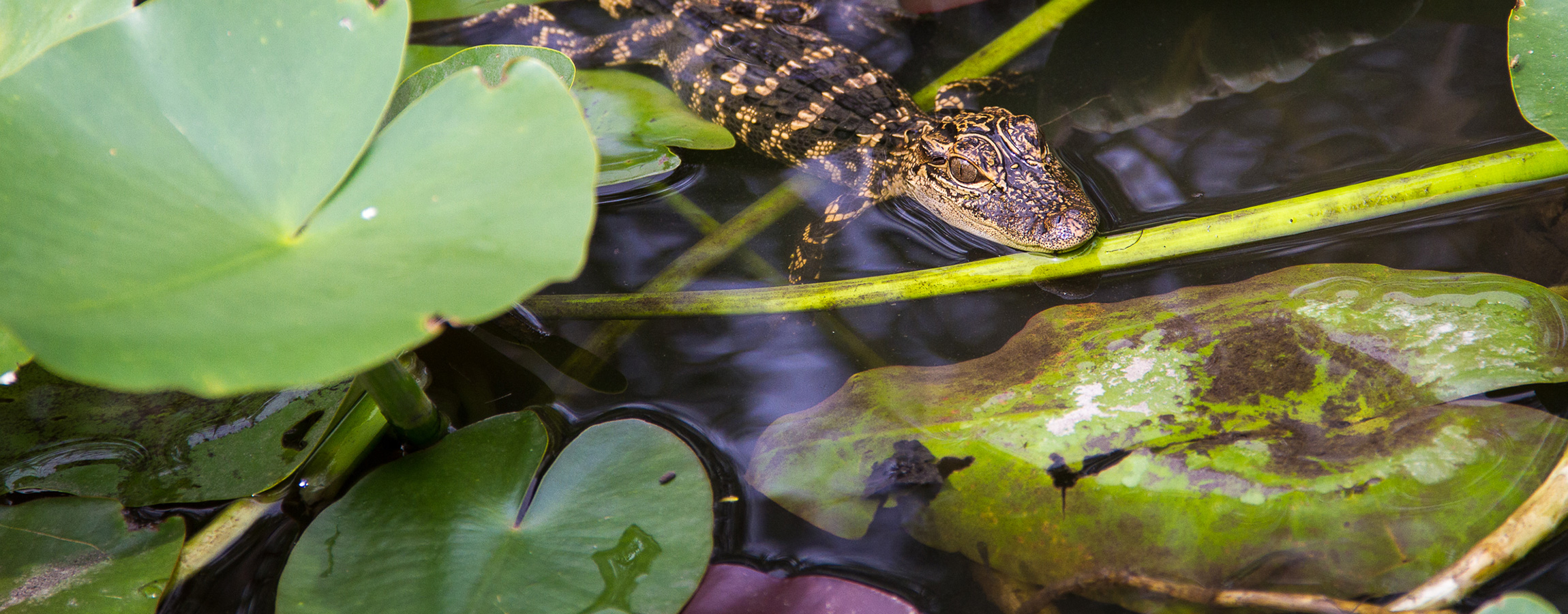Did you know that the Everglades National Park is the only ecosystem in the world where alligators and crocodiles co-exist side by side?
Although alligators only thrive in fresh water because they can't digest salt, crocodiles can live in both fresh and salt water. The Everglades is unique because fresh water in the Florida Bay meets the salt water of the Gulf of Mexico, creating a perfect ecosystem for both animals to live together.
Wanna know more? Here are some other interesting facts about gators:
- There are over 200,000 alligators in the Everglades—but over 1.5 million in the state of Florida!
- The coastal plains of the southeastern United States are home to most gators, who live in both natural and man-made freshwater lakes, ponds, rivers, and wetland areas.
- Alligators do not eat human beings! However, they will protect and defend themselves, attacking humans if they get too close or endanger their young.
- Gators are territorial and frequently get into fights defending their space. As a result, you'll often seealligators that are scarred or missing a tail, leg or eye from a fight.
- As solitary reptiles, you'll rarely see alligators in groups except during the spring mating season. They lay 30-40 eggs which incubate for approximately 60-65 days and produce hatchlings 8-10 inches long.
- A whopping 68 percent of an alligator is pure muscle. Male alligators can grow up to 12 feet and weigh 400-500 pounds, while female alligators usually grow to 8-9 feet.
- The jaws of a gator have over 1,000 pounds of closing pressure. Yikes!
- Each alligator has approximately 80 teeth at any time. When they wear down or are lost in battle, they are replaced with new teeth. An alligator can go through 2,000 to 3,000 teeth in a lifetime!
- Gators live approximately 30-35 years in the wild, and can live past 50 years in captivity.
- The main diet of a gator consists primarily of fish, but they will also feed on turtles, mammals, snakes and birds.
- Often you'll see only the gator's head in the water, not its body. This allows them to more easily strike their prey, such as fish, without being detected.
- Alligators regulate their temperatures by moving out of the sun and into the shade, where they rest with their mouths open to release stored heat. They also cool off by going to the water.
- Because of legal protection, alligators are no longer endangered. They are, however, still classified as threatened to insure their continued protection and that of the endangered American crocodile.
- The University of Florida at Gainesville’s mascot is an alligator. Go Gators!










